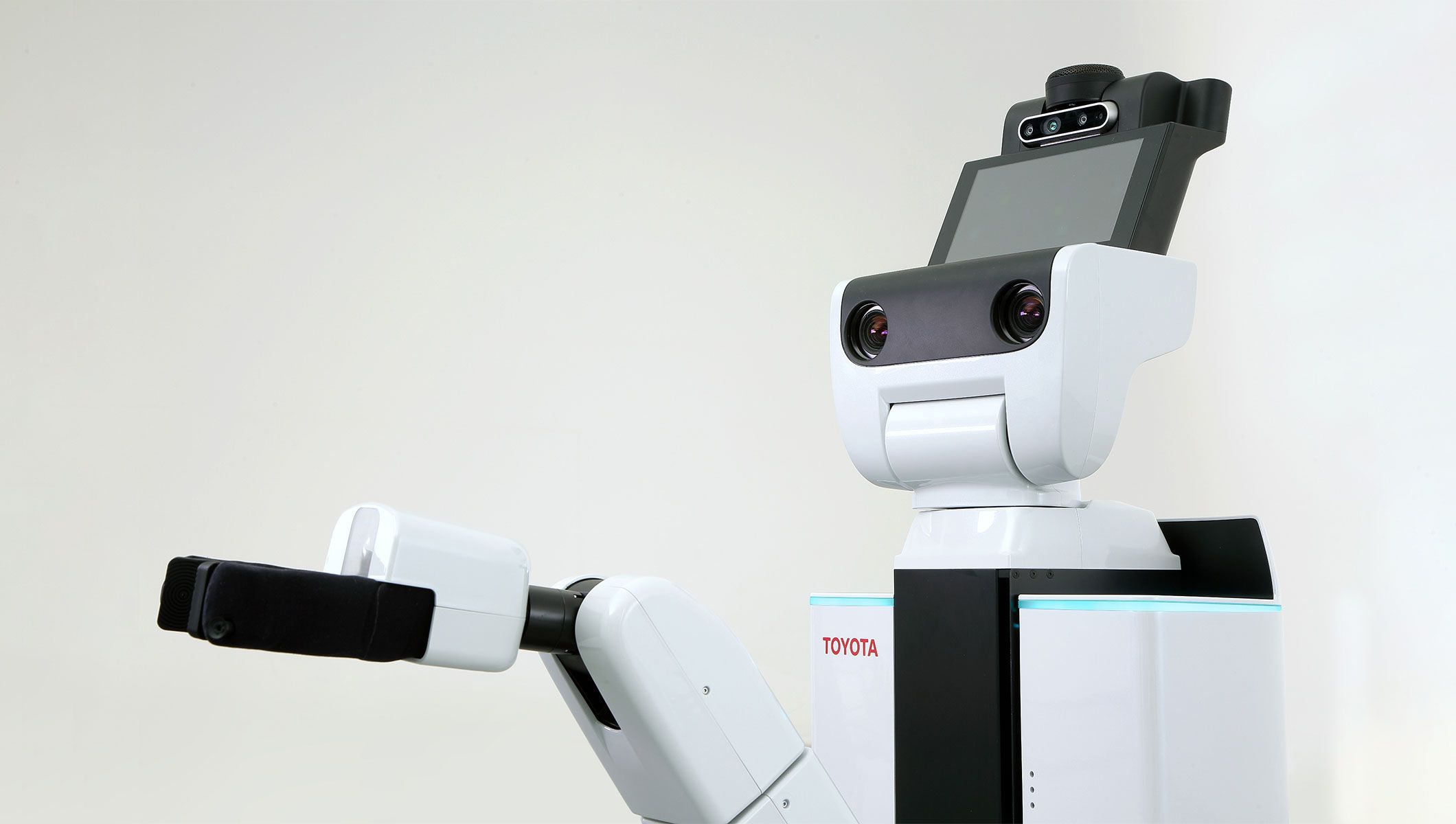Robots Will Help Spectators at Tokyo 2020 Olympics
The Tokyo 2020 Robot Project promises an assortment of robots to do useful things for visitors at the games. But will they be more than a novelty?
Last week, the 2020 Tokyo Olympic Games organizing committee announced the launch of the “Tokyo 2020 Robot Project.” The project will involve the deployment of an assortment of robots to do useful things for visitors at the games, but so far, we’ve just seen specific details about two: Toyota’s Human Support Robot (HSR) and Delivery Support Robot (DSR). These robots are supposed to be part of a “practical real-life deployment helping people,” and the idea is that HSR and DSR will work together to assist disabled visitors, showing them to their seats and fetching food or other items that can be ordered with a tablet.
The Toyota HSR is a mobile manipulator, able to move around and pick stuff up. It can do all kinds of things, provided that you can program it to do all of those things, which is not easy, especially if it’s supposed to operate autonomously in an Olympic venue rather than a robotics lab. Toyota’s DSR looks to be a somewhat simpler mobile robot that can transport snacks. Up to 16 HSR robots and 10 DSR robots will be operated by “several people,” although it’s not clear at this point how much autonomy the robots will be relying on.
The Human Support Robot and Delivery Support Robot developed by Toyota Motor Corporation will allow all spectators to enjoy watching the Tokyo 2020 Games in greater comfort. The robots will provide assistance to spectators in wheelchairs at the Olympic Stadium by carrying food and other goods, guiding people to their seats, and providing event information.
Other robots will perform a number of additional duties during the Games, details of which will be announced later. Overall, robot technology will help deliver safer and smoother Games, and while the robots will be deployed only in specific roles during the Games, the project is expected to showcase their potential for wider application in everyday life.
The term “showcase their potential” is what’s important here. While it’s possible that there will be other, more mature systems that are able to make a tangible difference during the event, Toyota’s HSR robots are very much research platforms, and they’ll be doing research-y tasks at the pace of research. They’ll be able to move around a bit as long as the ground is smooth and flat. They’ll be able to mostly not run into things. And my guess is that there will be a small team of humans anxiously hovering around them making sure that they do what they’re supposed to do.
But the potential of what these robots are doing is huge, even if, strictly speaking, you’d get way more functionality for way less money if you were to just pay a human to do it instead. Toyota is working hard to develop robots that will be able to take care of people, including people with disabilities and the elderly, because Toyota understands that for many people, robots will be necessary when human help isn’t available.
HSR and DSR probably won’t be the robots that end up taking care of you, but they could very well be the ancestors of those robots. So when you see these robot demos at the Olympics, just keep in mind that they’re mostly an expression of what Toyota (and Japan) hopes will become practical, rather than what is necessarily practical right now.
[ Tokyo 2020 ] via [ Japan Times ] and [ Impress ]
Evan Ackerman is a senior editor at IEEE Spectrum. Since 2007, he has written over 6,000 articles on robotics and technology. He has a degree in Martian geology and is excellent at playing bagpipes.
